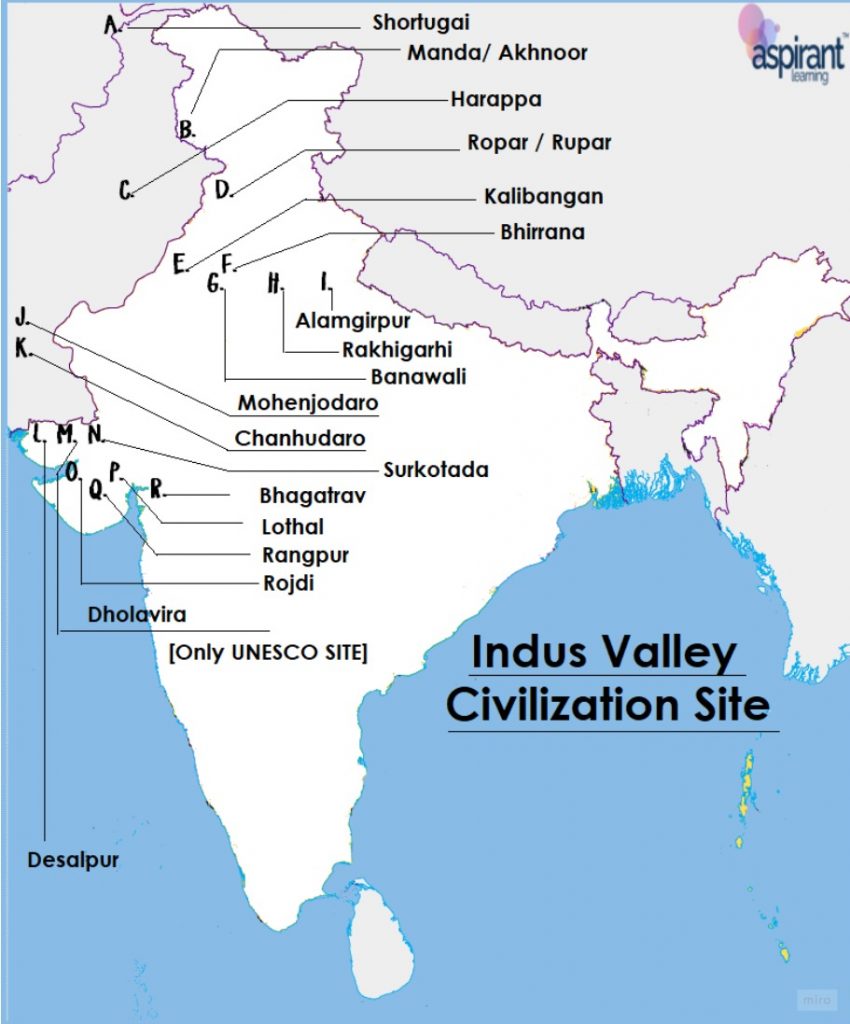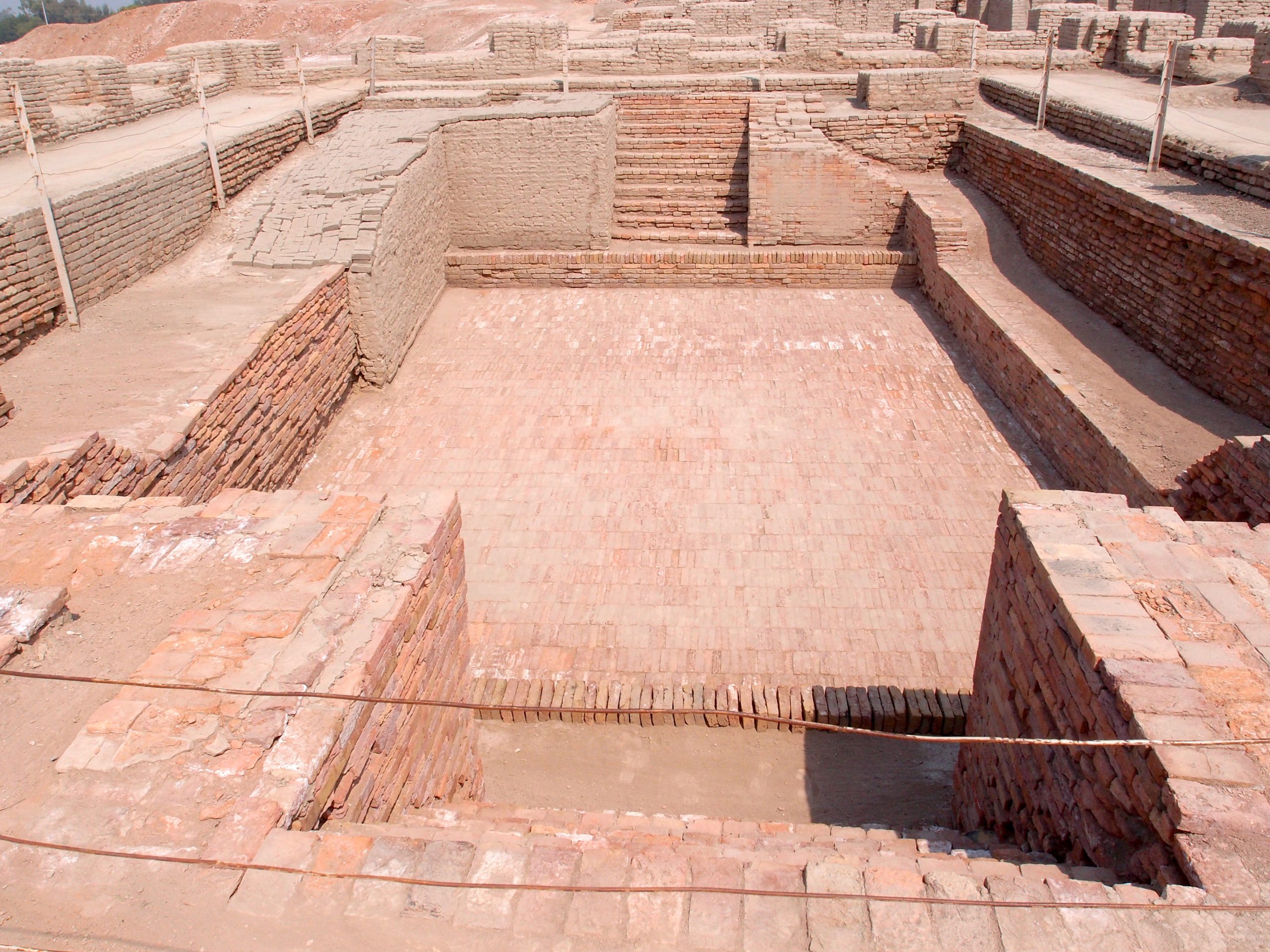Key Takeaways
- Rakhigarhi which is an Indus valley site which is subject to examination by Archaeological Survey of India( ASI) found evidence of a jewellery factory and human skeletons of a couple.
About RakhiGarhi
- The largest Harappan site on the Indian subcontinent is Rakhigarhi.
- Excavations are underway at Rakhigarhi to trace the site’s origins and investigate its steady history from 6000 BCE (Pre-Harappan phase) to 2500 BCE.
- Amarendra Nath of the Archeological Survey of India excavated the site.
- Findings from Rakhigarhi
- Mature Harappan phase with township built with mud-brick as well as burnt-brick houses
- Proper drainage system
- Cylindrical seal
- Red ware represented the ceramic industry, which created dish-on-stands, vases, and perforated jars, among other things.
- Beads of semi precious stones
- Animal sacrificial pit
Indus Valley Civilization ( 3500 – 1500 BC)
- It is a bronze age civilization that existed in the north – west part of Indian subcontinent
- It is an urbanised civilization that flourished on the banks of the Indus river which is contemporary to Egyptian civilization and Mesopotomian civilization.
- Sir Alexander Cunningham excavated the Harappa site for the first time in 1872-73, two decades after brick robbers carted away the visible ruins of the city.
- Rai Bahadur Daya Ram Sahni began the first significant excavations at Harappa in 1920.
- Three Phases of Indus Valley Civilization
- Early Harappan Phase from 3300 to 2600 BCE,
- Mature Harappan Phase from 2600 to 1900 BCE,
- Late Harappan Phase from 1900 to 1500 BCE.
- Reasons for downfall
- Climatic incidents like droughts and floods
- Over grazing led to degradation of soil
- Decline of trade
- Aryan invasion
Other Major Indus Valley Sites and Findings
| Sites | Location | River | Findings |
| Harappa | Punjab – Pakistan | Ravi | A row of 6 granariesR – 37 and H cemeteryCoffin burialRed sandstone male torsoCopper bullock cartSingle room barracksCitadel |
| Mohenjodaro | Sindh – Pakistan | Indus | Terracotta figure of Mother GoddessGreat bathGreat granaryWoven clothBronze statue of dancing girlPashupati sealSteatite statue of beard man |
| Chanhudaro | Sindh – Pakistan | Indus | City without citadelBead making factoryDog’s paw printTerracotta model of bullock cart |
| Lothal | Gujarat | Bhogvaha | Dockyard Pottery with painting of clever foxSea trade link with MesopotomiaDouble burial Fire altarsRice husk |
| Kalibagan | Rajasthan | Ghaggar | Mud brick fortification Discovery of plough fieldNo drainage fire alterCamel bones |
| Dholavira (UNESCO World Heritage site) | Gujarat | Luni | Water harvesting systemSignboard |
| Rangpur | Gujarat | Mahar | Stone Flecks |
| Banawali | Haryana | Saraswati | No drainage systemLapis Lazuli Radial streetsRice huskBarleyEvidence of both pre-Harappan and Harappan culture |
| Surkotada | Gujarat | Horse remains Graveyard | |
| Ropar | Ropar | Sutlej | First site excavated after independenceCopper axe |

Content Source : Hindustan Times



